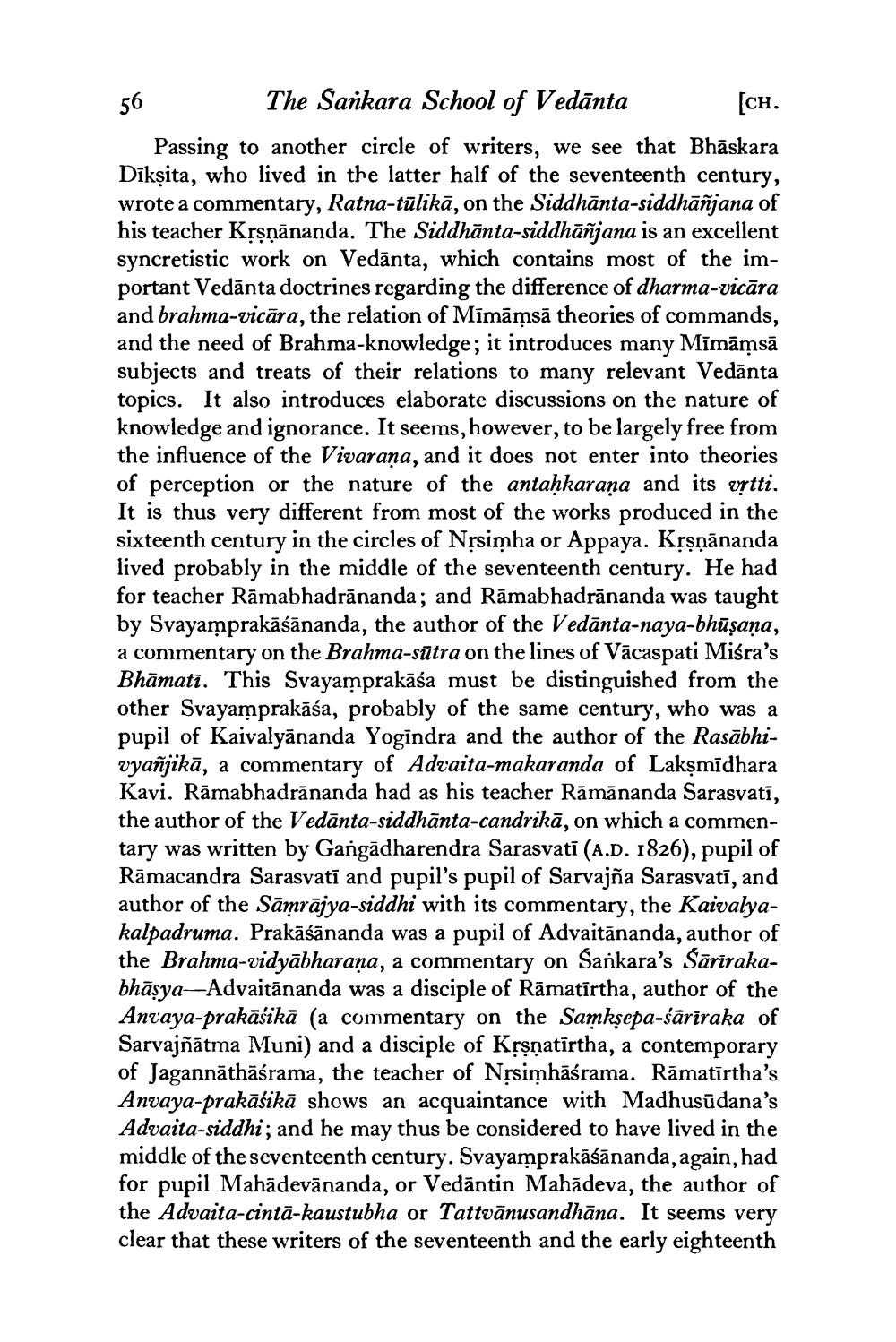________________
56
The Sankara School of Vedānta [CH. Passing to another circle of writers, we see that Bhāskara Dīkṣita, who lived in the latter half of the seventeenth century, wrote a commentary, Ratna-tālikā, on the Siddhānta-siddhāñjana of his teacher Krşņānanda. The Siddhānta-siddhāñjana is an excellent syncretistic work on Vedānta, which contains most of the important Vedānta doctrines regarding the difference of dharma-vicāra and brahma-vicāra, the relation of Mimāmsā theories of commands, and the need of Brahma-knowledge; it introduces many Mīmāmsā subjects and treats of their relations to many relevant Vedānta topics. It also introduces elaborate discussions on the nature of knowledge and ignorance. It seems, however, to be largely free from the influence of the Vivarana, and it does not enter into theories of perception or the nature of the antaḥkaraṇa and its ortti. It is thus very different from most of the works produced in the sixteenth century in the circles of Nộsimha or Appaya. Krşņānanda lived probably in the middle of the seventeenth century. He had for teacher Rāmabhadrānanda; and Rāmabhadrānanda was taught by Svayamprakāśānanda, the author of the Vedānta-naya-bhūşaņa, a commentary on the Brahma-sūtra on the lines of Vācaspati Miśra's Bhāmati. This Svayamprakāśa must be distinguished from the other Svayamprakāśa, probably of the same century, who was a pupil of Kaivalyānanda Yogindra and the author of the Rasābhivyañjikā, a commentary of Advaita-makaranda of Laksmīdhara Kavi. Rāmabhadrānanda had as his teacher Rāmānanda Sarasvati, the author of the Vedānta-siddhānta-candrikā, on which a commentary was written by Gangādharendra Sarasvati (A.D. 1826), pupil of Rāmacandra Sarasvati and pupil's pupil of Sarvajña Sarasvatī, and author of the Sāmrājya-siddhi with its commentary, the Kaivalyakalpadruma. Prakāśānanda was a pupil of Advaitānanda, author of the Brahma-vidyābharaṇa, a commentary on Sankara's Sārīrakabhāsya-Advaitānanda was a disciple of Rāmatīrtha, author of the Anvaya-prakāśikā (a commentary on the Samkṣepa-śārīraka of Sarvajñātma Muni) and a disciple of Krşņatirtha, a contemporary of Jagannāthāśrama, the teacher of Nșsimhāśrama. Rāmatīrtha's Anvaya-prakāśikā shows an acquaintance with Madhusūdana's Advaita-siddhi; and he may thus be considered to have lived in the middle of the seventeenth century. Svayamprakāśānanda, again, had for pupil Mahādevānanda, or Vedāntin Mahādeva, the author of the Advaita-cintā-kaustubha or Tattvānusandhāna. It seems very clear that these writers of the seventeenth and the early eighteenth




